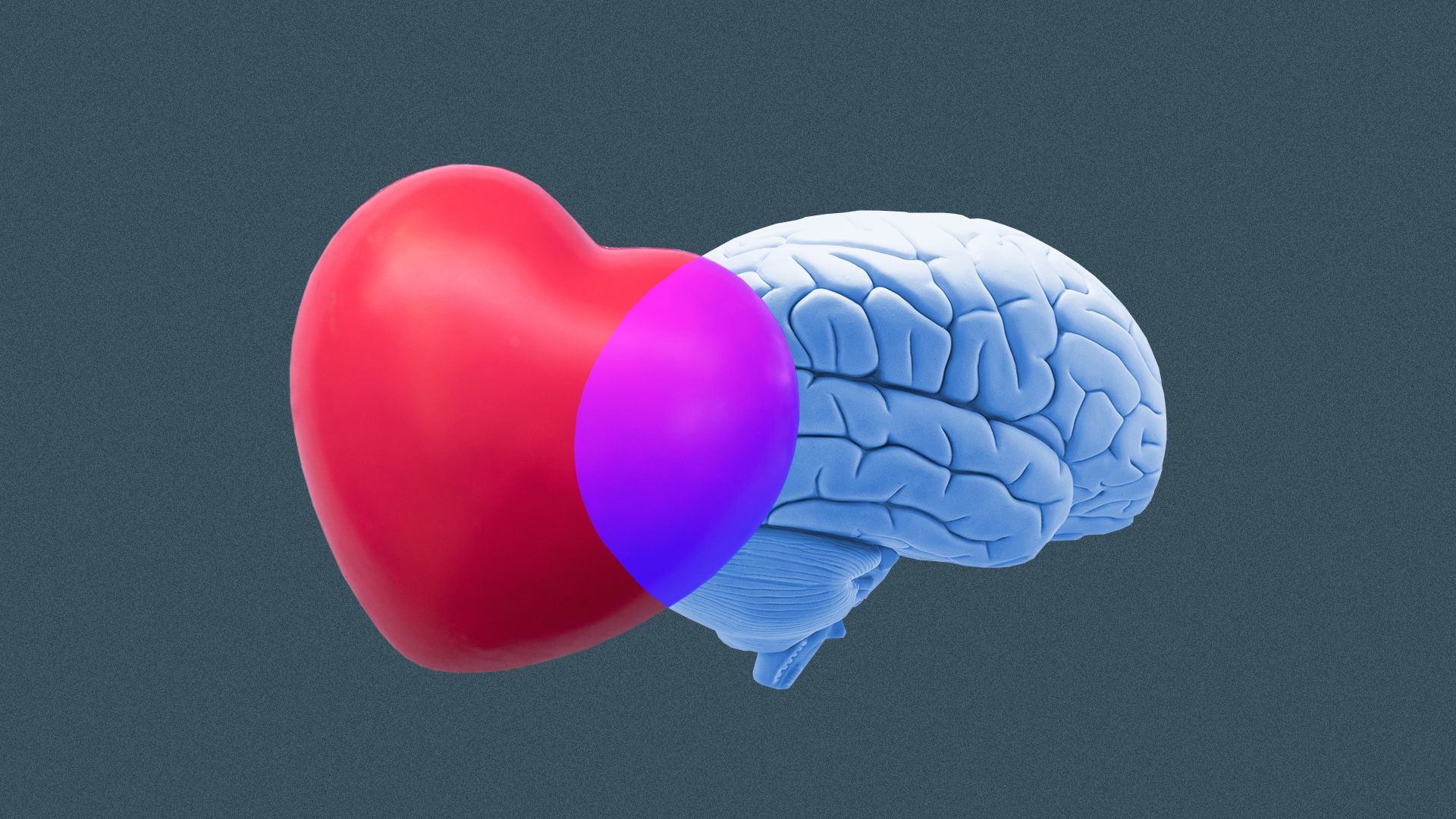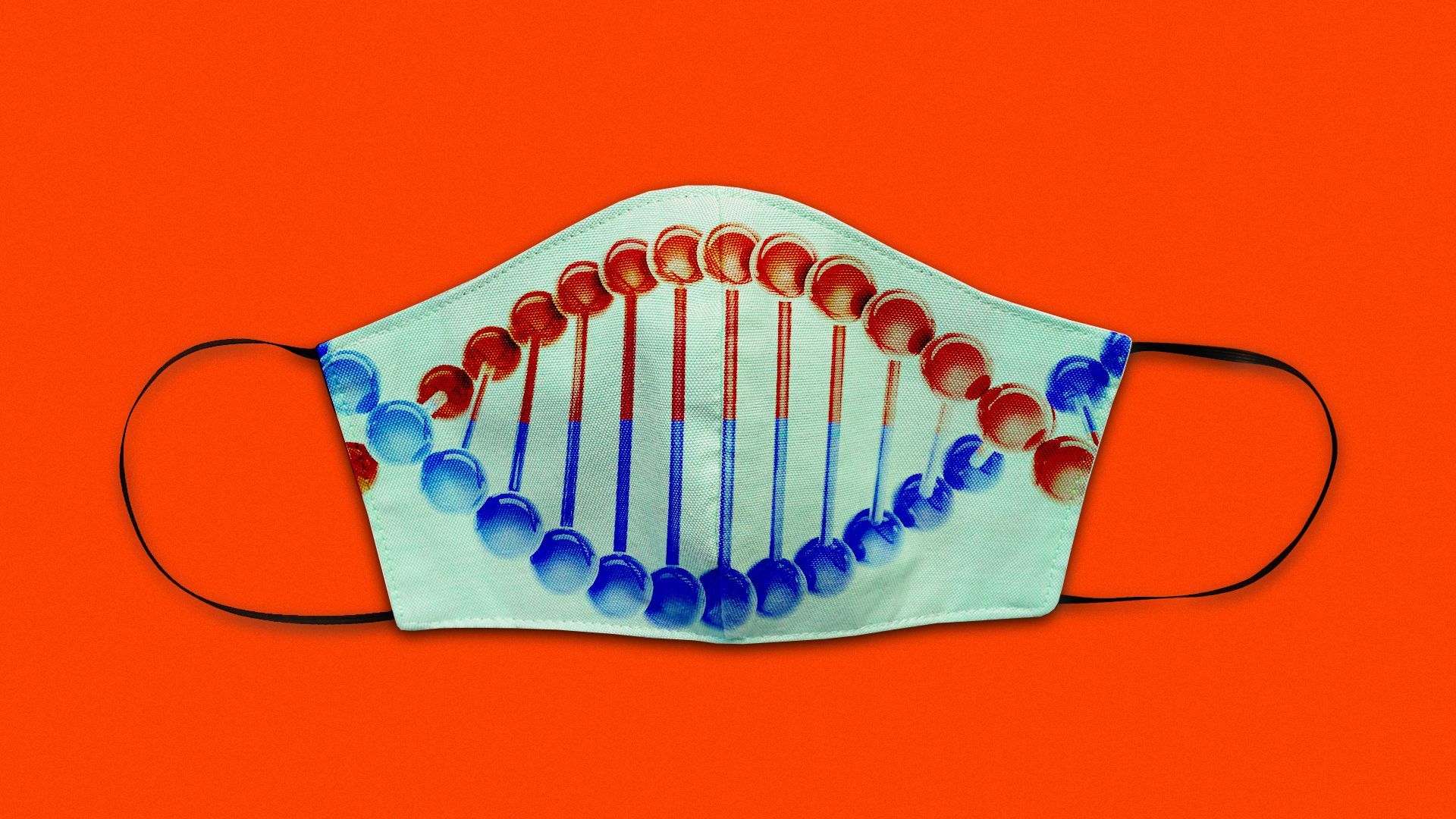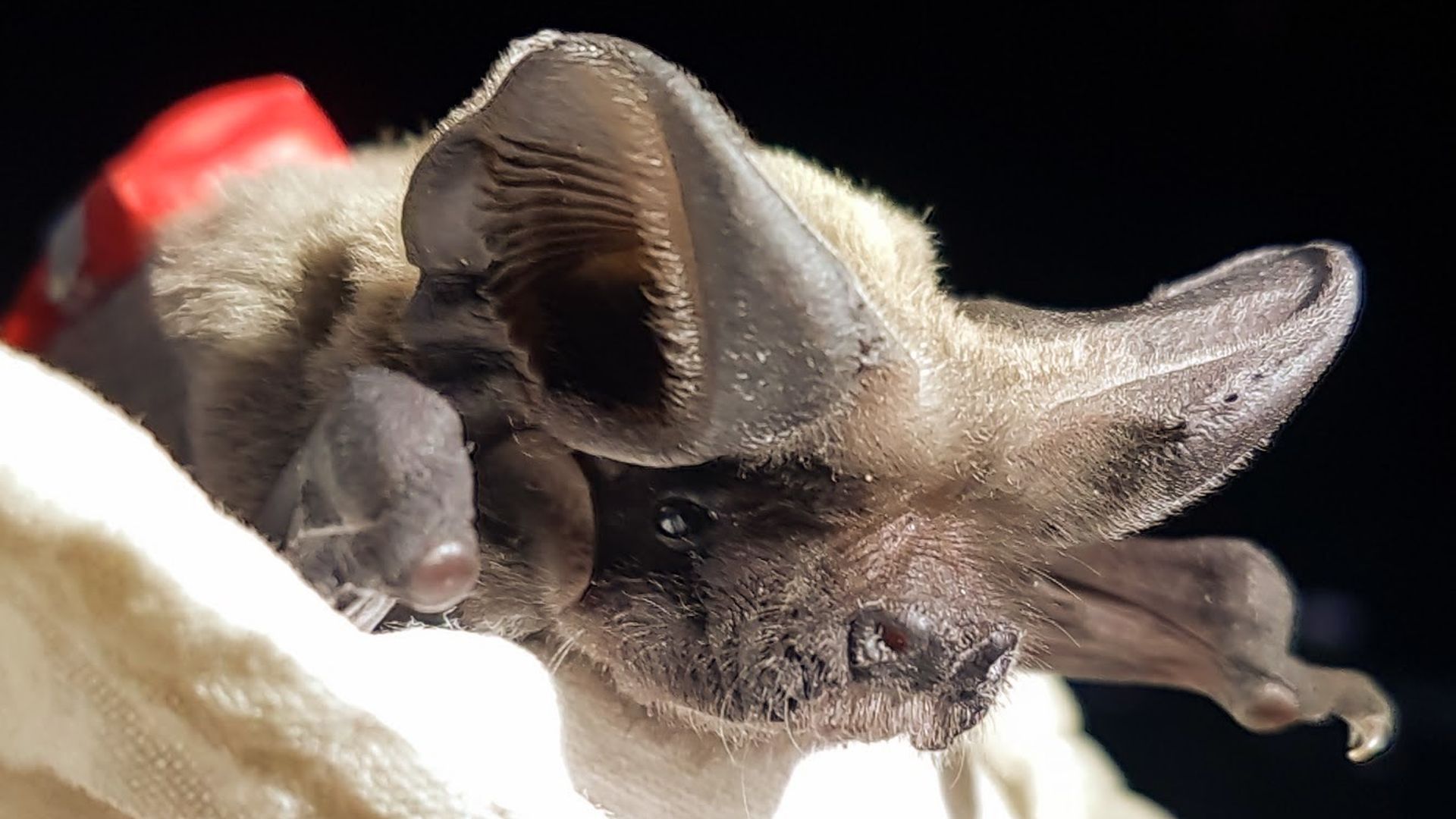| | | | | | | Presented By Flatfile | | | | Axios Science | | By Alison Snyder ·Feb 04, 2021 | | Thanks for reading Axios Science. This week's newsletter is 1,380 words, a 5-minute read. | | | | | | 1 big thing: The power — and pitfalls — of personal stories |  | | | Illustration: Annelise Capossela/Axios | | | | Personal experiences — more than cold, hard facts — may be a way to bridge the moral and political divides that have fractured so many families and friendships. But that same cognitive tug can also be leveraged to fuel misinformation. Why it matters: Personal stories, especially those about experiences of harm, may establish common ground among people who don't agree on politics, according to a new study. But they are a powerful driver of what we perceive as true and can be misinterpreted or misused, experts warn. Details: In the first experiments in a series of 15 studies, Kurt Gray, a social psychologist at the University of North Carolina, and a team of researchers found that when people were asked to imagine interacting with someone who had a different political view, they rated opponents who presented facts as more rational than those whose arguments were based on personal experience. But when the researchers analyzed on-the-street conversations about gun policy, political pundits talking on CNN or Fox News, and other real-world interactions, they found personal experiences are actually more powerful than facts in political debates. - People were more likely to see someone they disagreed with as rational — and therefore respected them and were more likely to interact with them — if their stances were rooted in personal stories versus laying out a fact-based argument.
- And experiences in which an opponent had experienced harm were most likely to foster respect compared to a personal experience where someone wasn't harmed or suffering, they report in the Proceedings of the National Academy of Sciences.
What they're saying: The findings provide a first step in having more productive conversations with people who, for example, engage in conspiracy theories, says Jay Van Bavel, an associate professor of psychology at New York University who wasn't involved in the study. The big question: Does hearing someone's personal experience persuade us to change our beliefs or behaviors? - The new study doesn't tackle that, but Gray suggests, "If we want to get people to work together, maybe we want to have common understanding through personal experience and then get to the facts."
But offering someone facts even after leading with a personal story may not be as effective as a story alone, says Annie Duke, who studies decision science. - In a 2016 study, researchers found people were less likely to donate money to a hypothetical charity when the appeal involved both a story about a particular child and statistical information about the scope and nature of the problem, compared to when either was presented alone.
The big picture: "Facts aren't true in the same way that personal experiences are true," says Gray. Facts can be countered and reframed with other facts, but "the more powerful truth is our lived truth and we appreciate that in others as well," he says. - Personal narratives, particularly ones of personal harm, can't be denied and are activating, Duke says, pointing to the spread of moralized content on social media.
- That's a strength of human cognition that supports our empathy and social behavior.
Yes, but: It is also a big weakness, Duke says. - Data and facts are the counter-narrative to anecdotes and can be discussed and debated in creating policies, but the new study implies "a personal story that is false will have more power to create respect than facts, including those facts that would serve to correct the narrative," Duke, Van Bavel and their colleagues write in a commentary about the new research from Gray's team.
What to watch: Data demonstrating the benefits and safety of vaccination already faces a foe in narratives of harm from vaccines, potentially jeopardizing the effort to reach herd immunity to COVID-19, Van Bavel says. Go deeper. |     | | | | | | 2. Catch up on COVID |  Data: The COVID Tracking Project, state health departments; Map: Andrew Witherspoon/Axios "Nationwide, the U.S. is averaging about 139,000 new cases per day — a 16% improvement over last week, which was a 16% improvement over the week before," Axios' Sam Baker and Andrew Witherspoon report. - "Between the lines: 139,000 cases and 3,000 deaths per day is still a very bad pandemic, but at least the numbers are headed in the right direction."
Young and middle-aged adults contributed most to COVID-19's spread last year, my Axios colleague Caitlin Owens reports. The Sputnik V vaccine developed in Russia is almost 92% efficacious in preventing symptomatic COVID-19 and 100% against severe disease and death, according to an interim analysis published in The Lancet this week. |     | | | | | | 3. How CRISPR might help diagnose and halt dangerous outbreaks faster |  | | | Illustration: Annelise Capossela/Axios | | | | Gene editing may lead the next generation of diagnostics that could help to quickly stop disease outbreaks and pandemics, Eileen Drage O'Reilly writes. The big picture: New mRNA vaccine platforms, up-and-coming CRISPR diagnostics and other genomics-based tools may be the key to halting future pandemics. Their "plug and play" characteristics should allow a short turnaround to diagnose a pathogen, contact trace suspected carriers, and develop a protective vaccine, experts tell Axios. - The hope also is for CRISPR diagnostics to allow military personnel, clinical doctors or even people in their homes to be able to quickly and precisely narrow down the suspects for mysterious illnesses, says Jean-Paul Chretien, DIGET program manager at DARPA, which invests in breakthrough technologies for national security.
CRISPR diagnostics were on the cusp of a breakthrough before the COVID-19 pandemic started, says Amesh Adalja, senior scholar at Johns Hopkins Center for Health Security. - PCR, which is considered the "golden standard," and antigen testing rose to prominence in this pandemic because they are "tried and tested," Adalja tells Axios.
- But PCR tests require special lab equipment and can take days to alter an assay to match an evolving pathogen.
- CRISPR tests are "a promising technology and probably will be accelerated because of COVID and the need for better diagnostic tests that are much more widely distributed in the population," he adds. A CRISPR diagnostic test can be altered in hours to detect new variants or pathogens.
Where it stands: Multiple CRISPR tests are now under study for COVID-19, including ones using the Broad Institute's Sherlock system or Mammoth Bioscience's DETECTR system, both of which received FDA emergency use authorizations in certain circumstances. - DARPA was "excited" about a paper from Broad in early 2020 describing a CRISPR-based device called CARMEN, which could distinguish between 169 viruses, Chretien says.
- There's "proof of concept" that CRISPR tests are very sensitive, accurate and specific — similar to the "golden standard" PCR tests currently used for diagnostics, Chretien says.
- But there needs to be "substantial innovation" to get the technology where it needs to go, which is why DARPA has awarded several grants to companies, he adds.
Read the entire story. |     | | | | | | A message from Flatfile | | How 100+ businesses migrated customer data in 2020 | | |  | | | | Data migration is a covert challenge for startups through enterprises. - 96% of companies surveyed by Flatfile ran into problems when importing data – 23% said migrating data takes weeks.
Read the 2020 State of Data Onboarding report for more insights. | | | | | | 4. Worthy of your time |  | | | Illustration: Aïda Amer/Axios | | | | Scientists work with AI to measure chronic pain (Bryan Walsh — Axios) Could the immune system be key to Alzheimer's disease? (Esther Landhuis — Knowable) The terrifying warning lurking in the Earth's ancient rock record (Peter Brannen — The Atlantic) Scientists for the people (Deborah Coen — Aeon) |     | | | | | | 5. Something wondrous |  | | | A bat with a GPS tag on its back. Photo: Teague O'Mara/Southeastern Louisiana University | | | | European free-tailed bats can surf uplifting winds to fly a mile high. Why it matters: The small mammals can achieve such heights — and high speeds sometimes of up to 84 mph — without expending a large amount of energy. Harnessing those principles could help to improve drones and other high-speed, low-energy modes of flight. Background: Researchers had detected bats high in the sky before, but it wasn't clear to them how the bats managed to fly there. - Unlike herons or eagles whose wings structure allows them to soar, bats' hands — with skin stretched out over their fingers — are their wings, says Teague O'Mara, who studies bats at Southeastern Louisiana University.
What they found: O'Mara and his colleagues put GPS trackers on the backs of eight European free-tailed bats (Tadarida teniotis) to track their location. They then combined that data with topography, wind and weather models to see when and where the bats were flying with and against the wind. - If wind is traveling across a landscape and hits a mountain or hill, it pushes the wind straight up.
- They saw that the bats were able to repeatedly find and ride those winds, sometimes nearly a mile up in just 20 minutes. The bats would then descend and rise again on a rollercoaster-like path, the researchers report today in the journal Current Biology.
- "That's super incredible," says O'Mara, in part because they don't have the long-distance visibility that birds flying during the day do and instead navigate mainly on echolocation, which has a range of about 50 meters (164 feet).
- The findings suggest the bats have some type of mental map of the terrain, says O'Mara.
- How bats create that map is an open question.
The big picture: "There are so many different ways animals fly that we are still discovering parts about it," says O'Mara. "Things that we thought weren't possible appear in our faces. There is such an enormous amount of variation in life." |     | | | | | | A message from Flatfile | | How 100+ businesses migrated customer data in 2020 | | |  | | | | Data migration is a covert challenge for startups through enterprises. - 96% of companies surveyed by Flatfile ran into problems when importing data – 23% said migrating data takes weeks.
Read the 2020 State of Data Onboarding report for more insights. | | | | | | Axios thanks our partners for supporting our newsletters.
Sponsorship has no influence on editorial content. Axios, 3100 Clarendon Blvd, Suite 1300, Arlington VA 22201 | | | You received this email because you signed up for newsletters from Axios.
Change your preferences or unsubscribe here. | | | Was this email forwarded to you?
Sign up now to get Axios in your inbox. | | | | Follow Axios on social media:    | | | | | |









No comments:
Post a Comment